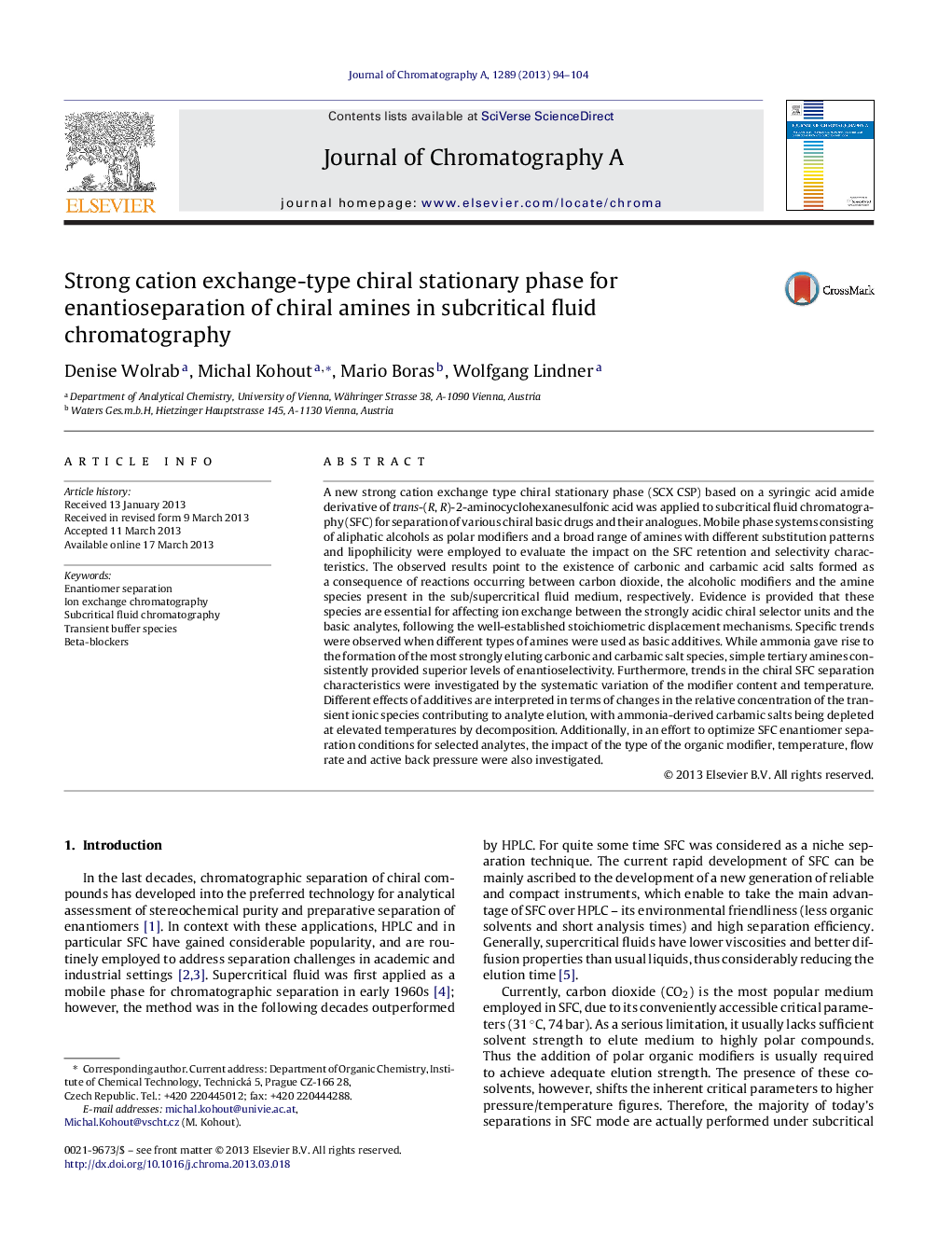| Article ID | Journal | Published Year | Pages | File Type |
|---|---|---|---|---|
| 1200209 | Journal of Chromatography A | 2013 | 11 Pages |
•New cation exchange CSP for separation of chiral amines in SFC mode is presented.•We documented that analyte retention is primarily driven by ion-exchange process.•Systematic evaluation of all parameters significant in SFC is provided.•Evidence for buffer formed in situ upon reaction of a modifier and scCO2 is provided.
A new strong cation exchange type chiral stationary phase (SCX CSP) based on a syringic acid amide derivative of trans-(R, R)-2-aminocyclohexanesulfonic acid was applied to subcritical fluid chromatography (SFC) for separation of various chiral basic drugs and their analogues. Mobile phase systems consisting of aliphatic alcohols as polar modifiers and a broad range of amines with different substitution patterns and lipophilicity were employed to evaluate the impact on the SFC retention and selectivity characteristics. The observed results point to the existence of carbonic and carbamic acid salts formed as a consequence of reactions occurring between carbon dioxide, the alcoholic modifiers and the amine species present in the sub/supercritical fluid medium, respectively. Evidence is provided that these species are essential for affecting ion exchange between the strongly acidic chiral selector units and the basic analytes, following the well-established stoichiometric displacement mechanisms. Specific trends were observed when different types of amines were used as basic additives. While ammonia gave rise to the formation of the most strongly eluting carbonic and carbamic salt species, simple tertiary amines consistently provided superior levels of enantioselectivity. Furthermore, trends in the chiral SFC separation characteristics were investigated by the systematic variation of the modifier content and temperature. Different effects of additives are interpreted in terms of changes in the relative concentration of the transient ionic species contributing to analyte elution, with ammonia-derived carbamic salts being depleted at elevated temperatures by decomposition. Additionally, in an effort to optimize SFC enantiomer separation conditions for selected analytes, the impact of the type of the organic modifier, temperature, flow rate and active back pressure were also investigated.
